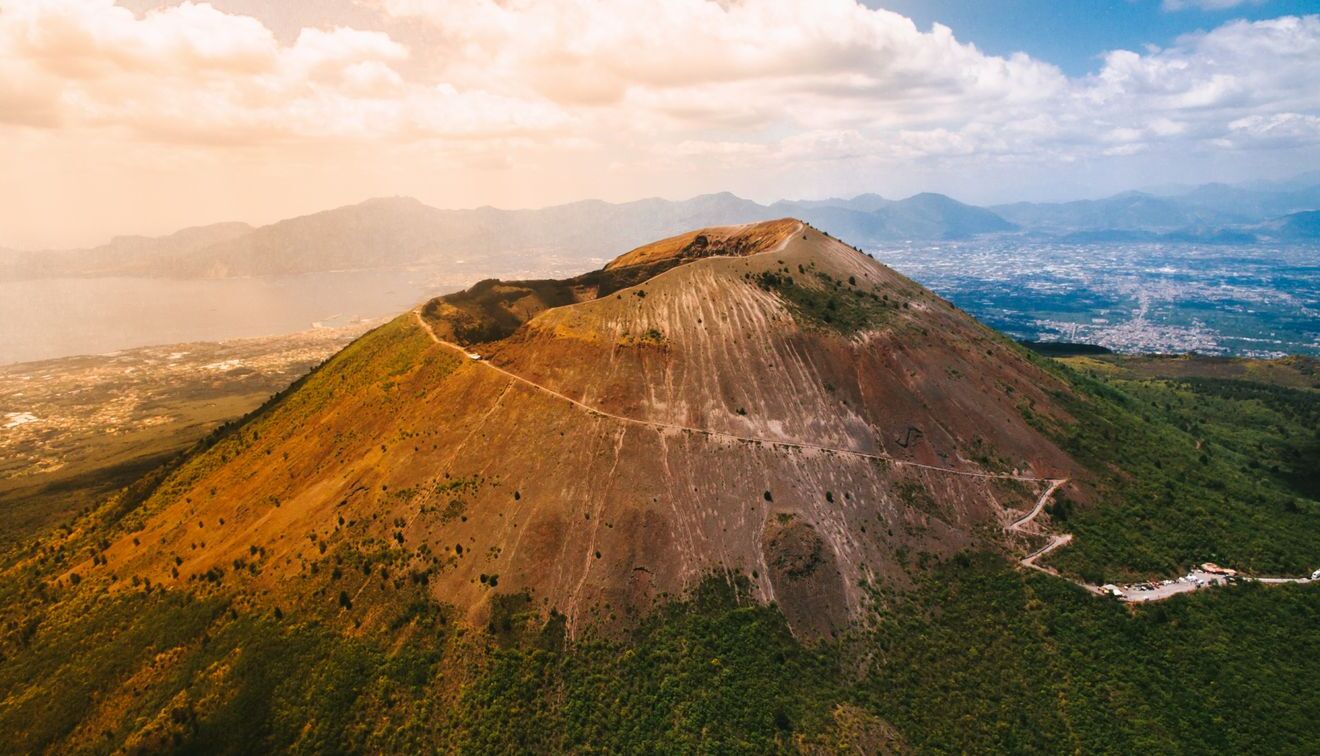
Mount Vesuvius, a name that echoes through history, stands as one of the most famous volcanoes in the world. Nestled near Naples, Italy, this towering giant has a fiery past that continues to captivate scientists and tourists alike. But why is Mount Vesuvius so significant? Its eruption in 79 AD buried the Roman cities of Pompeii and Herculaneum under a thick blanket of ash, preserving them in time and offering a unique glimpse into ancient life. Today, Vesuvius remains an active volcano, posing a potential threat to the bustling population surrounding it. Its rich history and geological significance make it a subject of endless fascination. From its towering presence to its unpredictable nature, Mount Vesuvius is a reminder of nature's power and the delicate balance between human life and the forces of the Earth. Whether you're a history buff or a geology enthusiast, Vesuvius offers a story worth exploring.
The Mighty Mount Vesuvius
Mount Vesuvius is one of the most famous volcanoes in the world. Its history is filled with fascinating facts that capture the imagination. Let's explore some intriguing details about this iconic natural wonder.
-
Location: Mount Vesuvius is located in Italy, near the Bay of Naples. It's the only active volcano on mainland Europe.
-
Height: The volcano stands about 4,203 feet tall. However, its height changes due to eruptions and natural erosion.
-
Famous Eruption: In 79 AD, Vesuvius erupted catastrophically, burying the cities of Pompeii and Herculaneum under ash and pumice.
-
Volcano Type: It's a stratovolcano, characterized by a steep profile and periodic explosive eruptions.
-
Last Eruption: The last major eruption occurred in 1944 during World War II, causing significant damage to nearby villages.
The Impact of Vesuvius on History
Vesuvius has played a significant role in shaping history, especially with its infamous eruption in 79 AD. Its impact on ancient civilizations and modern science is profound.
-
Pompeii's Preservation: The eruption preserved the city of Pompeii, providing a snapshot of Roman life frozen in time.
-
Herculaneum's Fate: Unlike Pompeii, Herculaneum was buried under a thick layer of mud, which preserved wooden structures and even food.
-
Rediscovery: Pompeii was rediscovered in 1748, sparking interest in archaeology and ancient Roman culture.
-
Cultural Influence: The story of Vesuvius and Pompeii has inspired countless works of art, literature, and film.
-
Scientific Study: Vesuvius is one of the most studied volcanoes, helping scientists understand volcanic activity and predict future eruptions.
The Geology of Vesuvius
Understanding the geological aspects of Vesuvius helps explain its behavior and potential future activity. Its structure and composition are key to its explosive nature.
-
Caldera Formation: Vesuvius has a large caldera formed by the collapse of the volcano's summit during past eruptions.
-
Lava Composition: The lava is rich in silica, making it more viscous and explosive.
-
Tectonic Setting: Vesuvius is located on the convergent boundary between the African and Eurasian tectonic plates.
-
Volcanic Hazards: The volcano poses several hazards, including pyroclastic flows, ashfall, and lahars.
-
Monitoring Efforts: The Vesuvius Observatory, established in 1841, is the oldest volcano observatory in the world, dedicated to monitoring its activity.
The People and Vesuvius
The relationship between Vesuvius and the people living nearby is complex. Despite its dangers, the area around Vesuvius is densely populated.
-
Population Risk: Over 3 million people live in the vicinity of Vesuvius, making it one of the most dangerous volcanoes due to the potential impact on human life.
-
Evacuation Plans: Authorities have developed detailed evacuation plans to minimize risk in case of an eruption.
-
Tourism: Vesuvius is a popular tourist destination, attracting visitors who hike to its crater and explore the ruins of Pompeii.
-
Agriculture: The volcanic soil is fertile, supporting vineyards and orchards that produce renowned wines and fruits.
-
Cultural Heritage: The region's history and connection to Vesuvius are celebrated in local festivals and traditions.
Vesuvius in Modern Times
In today's world, Vesuvius remains a symbol of nature's power and unpredictability. Its presence continues to influence science, culture, and daily life.
-
Volcanic Research: Ongoing research aims to improve eruption prediction and understand the volcano's long-term behavior.
-
Environmental Concerns: Urbanization and pollution pose challenges to preserving the natural environment around Vesuvius.
-
Educational Programs: Schools and museums offer educational programs about Vesuvius, promoting awareness of volcanic hazards and history.
The Fiery Legacy of Mount Vesuvius
Mount Vesuvius stands as a monument to nature's power and unpredictability. Its eruption in 79 AD remains one of history's most infamous natural disasters, burying Pompeii and Herculaneum under layers of ash. This volcano has erupted more than 30 times since then, with its last major activity in 1944. Despite its dormancy, Vesuvius is still considered one of the world's most dangerous volcanoes due to the dense population nearby. Scientists keep a close watch, using advanced technology to monitor any signs of activity. The volcano's rich history and geological significance continue to attract researchers and tourists alike. Understanding Vesuvius helps us appreciate the delicate balance between human life and nature's forces. As we learn from the past, we can better prepare for the future, ensuring safety while respecting the volcano's enduring presence.
Was this page helpful?
Our commitment to delivering trustworthy and engaging content is at the heart of what we do. Each fact on our site is contributed by real users like you, bringing a wealth of diverse insights and information. To ensure the highest standards of accuracy and reliability, our dedicated editors meticulously review each submission. This process guarantees that the facts we share are not only fascinating but also credible. Trust in our commitment to quality and authenticity as you explore and learn with us.


